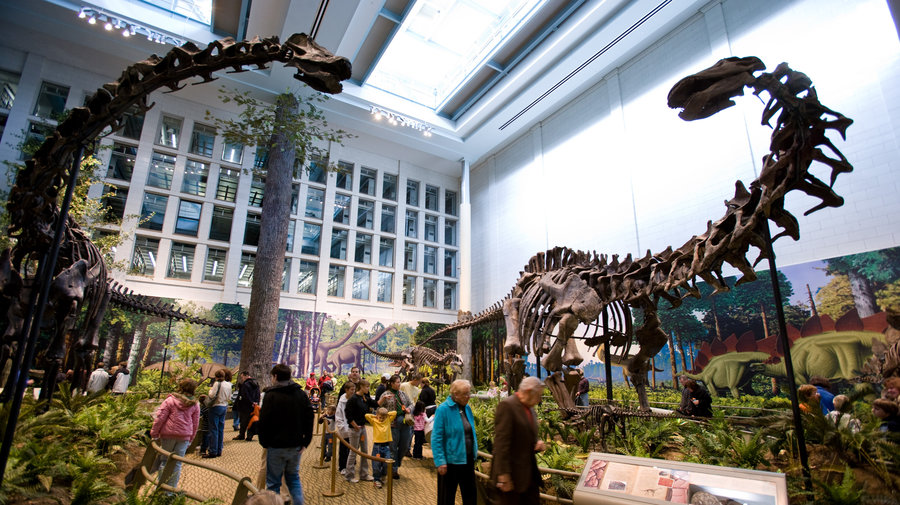Appendix:
Multi-millionaire Andrew Carnegie was a bit of a strange cat. Known for being a ruthless steel magnate, he was also an unparalleled philanthropist determined to use the entirety of his fortune for the betterment of all mankind. He believed a shared love of dinosaurs might be enough to usher in an era of world peace, and when the Carnegie Museum’s dig team unearthed a diplodocus at the turn of the century, he set out to prove it.

Andrew Carnegie grew up in abject poverty, but thanks to a generous neighbor who allowed him access to a private library during his childhood, he was able to educate himself and rise high above his station in life. His literacy landed him a position with a telegraphing company, where his hard work and dedication caught the attention of superintendent Thomas A. Scott of the Pennsylvania Railroad. Scott recruited teenage Carnegie as his personal secretary, and through close observation Carnegie learned the ins and outs of the train business. He would go on to become railroad superintendent himself, and would later be appointed Superintendent of the Military Railways for the entire Union after the outbreak of the American Civil War.
During his time on the rail lines, he saw a need for better infrastructure and communication between cities and outposts. After the war, he invested in creating telegraph lines along the railways and started a company to upgrade wooden bridges to sturdier, longer-lasting iron. This would eventually lead him to the process of refining steel, and he would become a millionaire after opening America’s first steel plant.
Carnegie dedicated the latter half of his life to giving away his immense fortune, $380 million – equivalent to about $309 billion today. This may in part have been due to a sense of guilt after a union strike at his own steel plant erupted into bloodshed. The event, known as the Homestead Strike, prompted Carnegie to retire from business and work towards lifting up the less fortunate. He is perhaps best known for creating thousands of public libraries around the world, since he believed books were the key to his own success and hoped to give young people of all backgrounds the same chance at knowledge and fortune.

Our story, however, begins when Carnegie saw this article in the December 1889 issue of the New York Journal:

Carnegie was instantly enamored with this brontosaurus, a name meaning “thunder lizard,” and believed the whole world would be equally as captivated, if he could just find one for his museum. He set a team of paleontologists to scour the badlands of the American West. Though they never did find a brontosaurus, the crew did ultimately manage to find enough bones to put together a near-complete diplodocus skeleton. What’s more, the fossils they uncovered indicated that their find was a variant species, dubbed Diplodocus carnegii.

Through some clever maneuvering and sleight of hand, Andrew Carnegie was eventually able to show his diplodocus off in front of several world leaders, beginning with King Edward VII of England. While the King was marveling at the bizarre animal, Carnegie offered to donate a diplodocus to the British Natural History Museum. The 1905 donation ceremony was an immense celebration that attracted dignitaries from around the globe, all clamoring for their own copies of Carnegie’s dinosaur. Carnegie was happy to oblige, having his museum team create cast replicas to be shipped all over the world.

“Dippy,” as the diplodocus came to be nicknamed, would eventually find its way to countries in every hemisphere, some of which had not yet been introduced to the concepts of dinosaurs and paleontology. The ability to compare sauropod fossils across nations led to unprecedented advancements in dinosaur knowledge and science, and Diplodocus carnegii is the most well-documented dinosaur in history. It’s arguable that if the world knows the word “dinosaur” today, it’s probably thanks to Andrew Carnegie and his diplodocus.

The ripples of Dippy’s debut are wide-reaching, from this early animation test featuring “Gertie,” directly based on Dippy…
…to the British rapper Diplo, who takes his name from the British Museum’s diplodocus.
The British Dippy is probably the most active of the Dippy counterparts, incidentally, with thousands of followers on Twitter.
Sources:
Bone Wars: The Excavation Of Andrew Carnegie’s Dinosaur by Tom Rea
Andrew Carnegie’s Story – Carnegie.org
Carnegie Museum of Natural History
Dippy the Diplodocus – Profile by BBC Radio 4
Rocky Road: Andrew Carnegie by Michon Scott
Diplodocus Carnegii, Peace Diplomacy by Dinosaur by N. Van Tol
Benchmarks: May 12, 1905: Andrew Carnegie donates ‘Dippy the Dino’ by David B. Williams
Diplodocus Carnegiei Meets Andrew Carnegie: The Paleontologist as Culture Hero by Bernard Mergen
Independence Day fossil: Dippy the star-spangled dinosaur by Henry Nicholls
Carnegie Had A Dinosaur Too by Richard Sassaman
Carnegie’s Famed Dinosaurs Get a Makeover by Michele Norris
When Diplodocus Invaded Europe by Brian Switek
The Diplodocus seen around the world
Museum Management:
Museum theme by Michael Guy Bowman
Listen to more at: bowman.bandcamp.com
Rachel: Designer #UkuleleWitch @rachelvice
Tour Guide: Emery Coolcats
Twitter: @natmysterycast | Email: natmysterypodcast@gmail.com | Home: pome-mag.com/category/pomecast
Follow the show on iTunes or Soundcloud!
Museum of Natural Mystery is part of the POMEcast network, and thanks a million to the ladies of POME for helping this show get up and running! But above all, thank you for listening!




